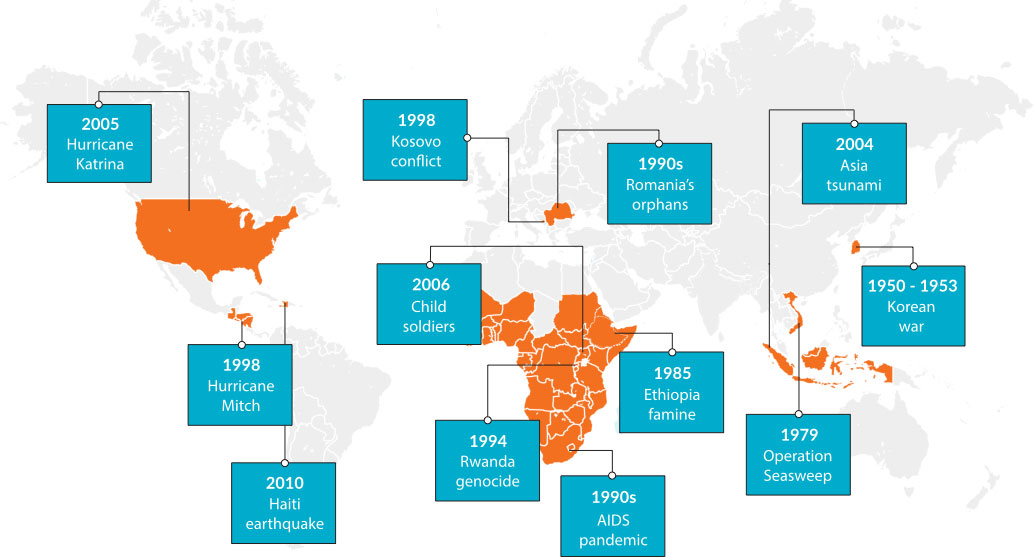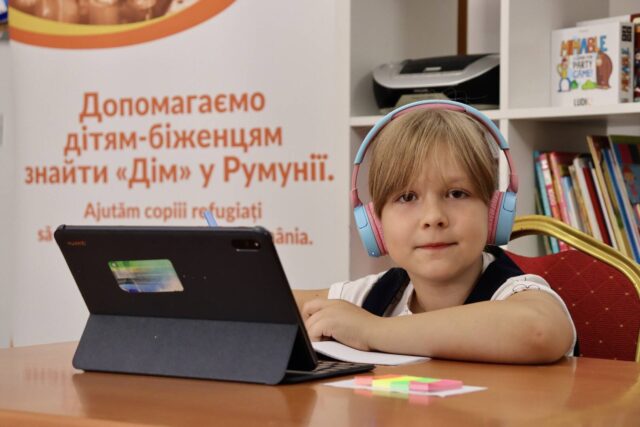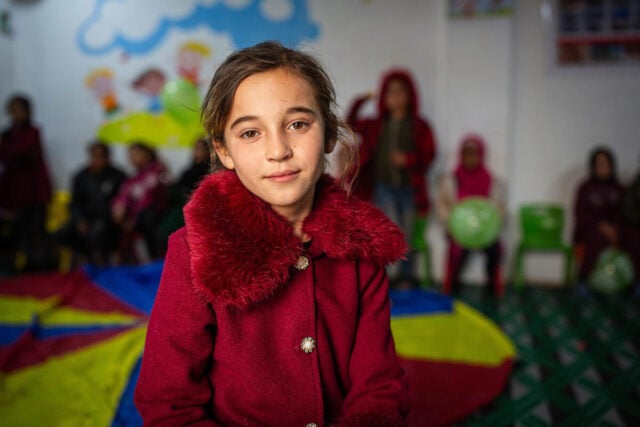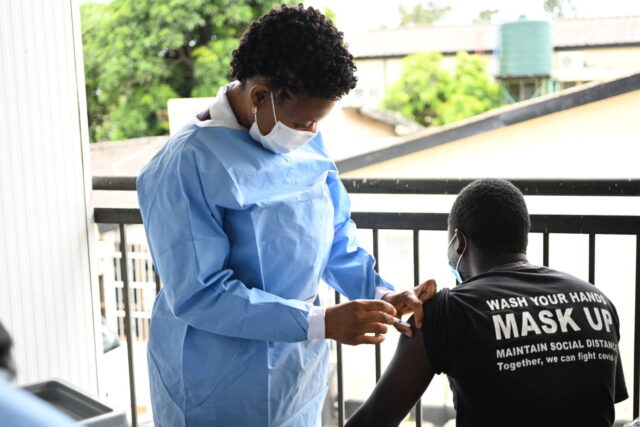DISASTER RELIEF
Find the latest news, in-depth stories, Q&As, and FAQs about natural disasters and humanitarian emergencies around the world.
Get weekly email updates!
Latest disaster news
65 years of disaster response
Starting in 1950 with the Korean War, World Vision has a “first in” and “last out” approach to emergency relief. Our goal is to help families and communities for the long term so they can be resilient and able to help others.

- 1950-1953 Korean war
- 1975 Operation Seasweep
- 1985 Ethiopia famine
- 1990s AIDS pandemic
- 1990s Romania’s orphans
- 1994 Rwanda genocide
- 1998 Hurricane Mitch
- 1998 Kosovo conflict
- 2004 Asian tsunami
- 2005 Hurrican Katrina
- 2006 Uganda Child soldiers
- 2010 Haiti Earthquake
Disaster relief best practices:
Help can have unintended consequences. These best practices are the result of decades of experience, learning, and collaboration among top disaster relief organizations:
- Raise funds ahead of time and pre-position relief supplies around the world.
- Send a seasoned team of experts to assess, plan, and respond.
- Coordinate with other organizations and governments. (Prevent people from falling through the cracks or gaming the system.)
- Carefully plan out distributions of food and relief supplies. Avoid riots and violence, and ensure help for those who need it most.
- Meet urgent, short-term needs, while working toward sustainable, long-term solutions.
Disaster relief best practices:
Help can have unintended consequences. These best practices are the result of decades of experience, learning, and collaboration among top disaster relief organizations:
- Raise funds ahead of time and pre-position relief supplies around the world.
- Send a seasoned team of experts to assess, plan, and respond.
- Coordinate with other organizations and governments. (Prevent people from falling through the cracks or gaming the system.)
- Carefully plan out distributions of food and relief supplies. Avoid riots and violence, and ensure help for those who need it most.
- Meet urgent, short-term needs, while working toward sustainable, long-term solutions.
How to help: Be a first responder
Donate monthly to the disaster relief fund and you will:
- Get relief supplies ready
- Send expert response teams
- Share God’s love in practical ways
- Meet urgent and long-term needs
You’ll also get quarterly updates on how your donations are helping.
Disaster relief facts
- Disaster relief work helps people affected by natural disasters (like hurricanes) and humanitarian emergencies (like the refugee crises)
- More than 90% of disaster-related deaths happen in developing countries (World Bank)
- Nearly 31 million children around the world have been forcibly displaced (UNICEF, 2018)
Are Christians more effective at humanitarian work?
Find out why Christians are uniquely suited to care for those in need and why The World Bank enlists the help of faith-based humanitarian organizations in helping to end extreme poverty.
Our approach to disaster relief work
We like to be prepared. When disaster strikes, we’re already there, ready to respond. That’s because we work in nearly 100 countries and hire staff who live and work in their own communities.
Get breaking disaster and refugee news!





